SUNGKYUNKWAN UNIVERSITY (SKKU), SEOUL, KOREA
- Prof. Young-Jun Jeon of Integrative Biotechnology Suggests the Possibility of
the World's First Radiation Targeted Treatments Customized for Lung Cancer Patients - Prof. Chun-Kwan Park of Global Biomedical Engineering Develops Control Nano
Treatment for People with COVID-19 and Sepsis - Prof. Byong-Ryong Choi Develops a Nanite Optical Modulator Control Phase and
Amplitude at Will - School of Pharmacy Prof. Ki-Hyun Kim's Joint Research Team Discovers New Inhibitory
Substance from Giant Puffball that Inhibits Breast Cancer Cells - Development of the World's First Fluorescence Amplifier Sensor for Detection of
Nitroaromatic Compounds - College of Biotechnology and Bioengineering Research Team Led by Prof. Suk-Chan Lee
Develops Treatment Substance that Cures Both COVID-19 and Influenza - Prof. Eui-Kyung Lee's Research Team Publishes Results of Study on Cost Effectiveness of
Antiviral Treatment in Patients with Chronic Hepatitis B - SKKU School of Chemical Engineering-BASF Electron Material Research Lab Develops
Flexible Plastic Circuit Board Technology for Next-Gen OLED - Prof. Choong-wan Woo's Research Team Suggests a Detectable Method for Chronic Pain
- Prof. Yung Doug Suh Discovers Photon Avalanche Phenomenon of Nanoparticles

The research team led by Young-jun Jeon, a professor of Integrative Biotechnology, identified that the degree of activity of KEAP1-NFE2L2 Pathway, a major mechanism of antioxidants, is an important factor in determining the prognosis of lung cancer patients using radiation targeted treatments. They also suggested the possibility of the world's first radiation targeted treatments customized for lung cancer patients.
Until now, most customized chemotherapies were focused on chemical chemotherapy, while the possibility of radiation therapy was never examined. Thus, the research team analyzed 230 lung cancer patients using Next Generation Sequencing (NGS) technology. As a result, a high recurrence rate and correlation were obtained after radiation treatment in a group of patients with mutations in the genes of KEAP1/NFE2L2.
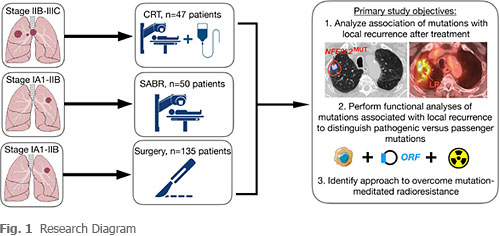
Among 232 lung cancer patients, samples were taken from 97 patients who received radiation treatment to analyze genes and divide them into recurrent groups and treated groups to identify the recurrence factor of cancer. To verify this, they used cellular biological methods to find radioactive resistance factors and to study ways to overcome them.
※ Extract image: Cancer Discovery DOI:10.1158/2159-8290.CD-20-0282
In this research, they also revealed that KEAP1-NFE2L2 is a radiation factor using genetic technique and is caused by an abnormal glutamine metabolism frequently found in lung cancer patients at the same time. Additionally, the team suggested that radiation resistance can be overcome using factors that disrupt it.
This research is evaluated as a result of presenting the possibility of applying the concept to different types of cancer, as well as contributing to maximizing the therapeutic effect of lung cancer patients by demonstrating a new paradigm that radiation therapy should also change the treatment method according to the genetic background of the individual.
Currently, the team is putting their efforts to develop an educational program links with Artificial Intelligence -Biotechnology which is well known as an important factor for the next generation. Based on this, they will develop a new method of analysis that can respond to individual anti-cancer treatment reactions by developing blood biopsy and machine learning techniques along with SKKU Medical School, Samsung Medical Center, and Stanford Medical School.
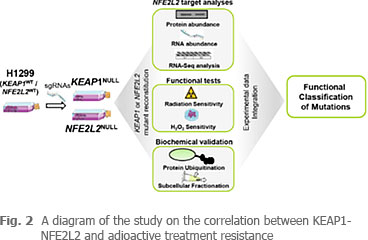
※ Extract image: Cancer Discovery DOI:10.1158/2159-8290.CD-20-0282
This research was conducted with the support of NRF-2020R1F1A1071579 and the result was published online on October 18 (Sun) in Cancer Discovery (Impact factor 29.497), the most authoritative journal on Oncology.

Prof. Chun-kwan Park's research team found a biomarker that can screen the severity of patients with COVID-19 and sepsis and announced that they developed a nanomaterial-base and general-purpose candidate treatment material with other researchers including Won-hwa Lee (Korea Research Institute of Bioscience & Biotechnology), Jun-hong Ahn (Yeungnam University), Hee-ho Park (Kangwon University), and Woo-ram Park (Catholic University).
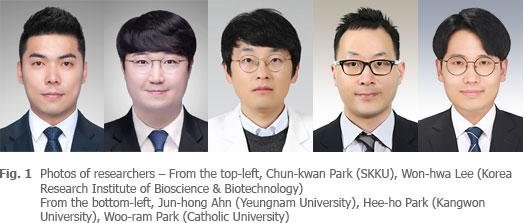
COVID-19 infections not only cause hyperinflammatory disease, causing local and systemic tissue damage, but also complications such as severe progressive pneumonia, acute respiratory syndrome and sepsis in mild respiratory diseases. However, vaccines against the coronavirus are under development, and treatments such as Remdesivir are being used on a limited basis. Also, there is no biomarker to predict patients who are aggravated or killed by diseases.
In response, the researchers found a biomarker that can predict the severity of the disease using the blood of the COVID-19 patients and developed a biomedical-based nano treatment that can prevent death from complications of severe patients using biomarkers.
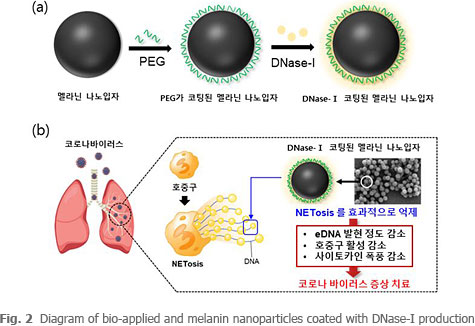
Patients with severe coronavirus show symptoms of acute dyspnea syndrome, especially severe lung tissue damage. In response, various immune cells in the blood, such as neutrophils, react immune to protect the host from virus infection, but if excessive, they become poison and attack normal cells. The process of apoptosis of cells due to abnormal activation of neutrophils is called neutrophil extracellular trap formation (NETosis) and the phenomenon of NETosis causes various complications such as acute respiratory syndrome and sepsis.
This study found that the NETosis-related factors in the blood of severe coronavirus patients are expressed very high compared to normal and mild patients, while the concentration of DNase-I in the body to suppress them is very low. It also developed a new concept nanoparticle that maintains the blood concentration of DNase-I in the body for a long-time using biomaterial-based nanotechnology to suppress many complications such as sepsis.
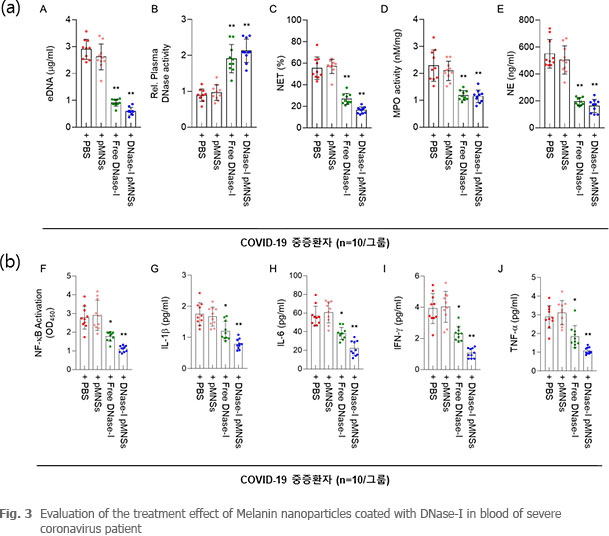
The research team produced nanoparticles that can be circulated for a long time in the body based on the excellent biocompatibility and adhesion characteristics of melanin, the main ingredient of squid ink. They also produced nanoparticles that have long-term therapeutic effects in the blood by attaching DNase-I, a biomolecule that decomposes DNA, the main ingredient of NETosis.
In addition, the administration of biocompatible melanin nanoparticles coated with DNase-I in severe coronavirus patient samples and septic animal models shows a significant difference from the administration of DNase-I alone, and it was confirmed that NETosis was inhibited to reduce overall inflammation and reduce mortality rate.
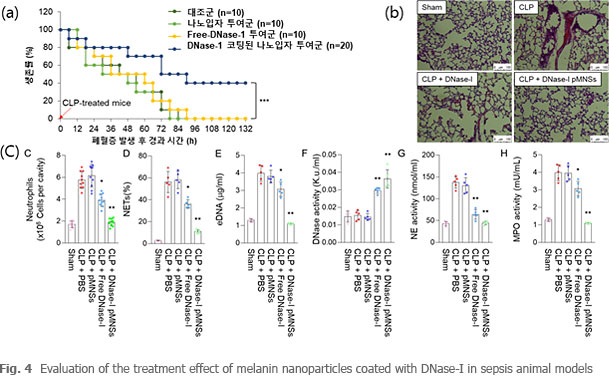
This study was supported by the Ministry of Science and ICT and National Research Foundation of Korea and the result was published in international journal, Advanced Science, online on October 20 (Tue).

Prof. Byong-Ryong Choi from the School of Advanced Materials Science & Engineering with a research team from Samsung Advanced Institute of Technology (SAIT) developed a brand new nanite optical modulator that can change the phase and amplitude of light at will.
An optical modulator is a device that controls the basic properties of light, and is widely used in the display industry and optical sensors as well as the optical communication industry. Recently, nanite optical modulator device research has been had popular, which has led to the development of Light Detection and Ranging (LiDAR) sensors for autonomous driving of robots, drones, and vehicles.
The modulators, however, have limits with regard to the displayable phase of light so the intensity of light after being manipulated was not equal. This lowered the efficiency of the light the device manipulated, which made it harder to use the light.

Prof. Choi and his co-research team proposed a new technology that permits two gate voltages to a single nanite optical modulator pixel. With this new technology, the modulator can change the phase of light freely in a 360° range and independently display amplitude at the same time. The new modulator has a benefit in speed and durability compared to existing modulators based on mechanical LiDAR technology.
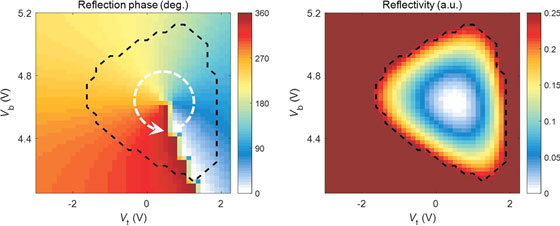
"By controlling the nanite device we've made, we sent light in different direction and measured the time-of-flight (ToF) of the reflected light's pulse delay time, and successfully got 3-dimension space information (Picture 3). We believe this technology is the one of the keys for new micro LiDAR chips based on semiconductor processing," said Prof. Choi.

The research was published online in Nature Nanotechnology in October 26, 2020.

A joint research team from the National Institute of Forest Science and Prof. Ki-Hyun Kim's research team from SKKU School of Pharmacy announced that they have discovered a sterol natural substance that inhibits the growth and development of breast cancer cells from giant puffballs on November 9 (Mon).
The joint research team has found the efficiency of reducing the viability of estrogen receptor-positive breast cancer cells from natural substances in the giant puffball. This substance is expected to be able to be highly utilized in the hormone treatment of breast cancer cells, a type that grows in response to estrogen, a female hormone.
The new sterol natural substance is highly related to ergosterol synthesis that helps absorb vitamin D, which is expected to boost immunity.
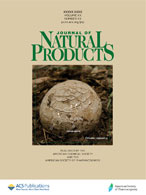 The result of this study was selected as the cover page of "Journal of Natural Product" vol. 83, issue 9, a popular international journal for natural product chemistry published by the American Society of Pharmacognosy.
The result of this study was selected as the cover page of "Journal of Natural Product" vol. 83, issue 9, a popular international journal for natural product chemistry published by the American Society of Pharmacognosy.
The National Institute of Forest Science said that the high expectations for the treatment of certain diseases can still be premature, as the development of new drugs using giant puffballs requires a toxicity assessment, safety verification, and clinical tests.
In particular, cancer patients must consult with their specialist and pharmacist to ensure that there are no side effects before mixing with drugs for treatment purposes.
*Original Article: https://www.yna.co.kr/view/AKR20201109027400063?input=1195m

A research team led by Professor In Su Kim from the School of Pharmacy, Sungkyunkwan University (President: Dong Ryeol Shin); Professor Jung Su Park from the School of Chemistry, Sookmyung Women's University and Professor Jonathan L. Sessler from the School of Chemistry, University of Texas, Austin, U.S. developed the world's first ratiometric fluorescence amplification sensor that can selectively detect nitro-explosive compounds. The findings were selected as a cover page in the October issue of the online edition of Journal of the American Chemical Society (IF = 14.612), a world-renowned journal in the field of chemistry.
Nitroaromatic compounds are known to be explosive substances that react vigorously, releasing toxic gases in the atmosphere. Typical explosive substances as trinitrotoluene (TNT) and nitromethane are currently being used as basic raw materials for the manufacture of explosives, including gunpowder. Nitroaromatic compounds are also part of pharmaceutical manufacturing processes of several APIs such as nifedipine, sildenafil (Viagra) etc. Such class of compounds require special attention while handling as they may cause explosion as a result of heat or impact.
In this study, Professor In Su Kim's research team and collaborators developed the world's first fluorescence amplifier sensor that can selectively adopt various nitroaromatic compounds by fluorescence indicator displacement assay method depending on binding affinities. In particular, a method was proposed to detect identifiable rate-measurable wavelength changes depending on the type of nitro-compound. Previously reported nitroaromatic sensors rely on fluorescence quenching technique with a simple reduction in luminescence intensity. Lower sensitivity, lack of selectivity and false positives are perceived as major drawbacks related to the previously known sensors as compared to the fluorescence amplification sensors.
Professor In Su Kim said, "This study resulted in the development of a new technology that can selectively detect explosive nitro-compounds, especially fluorescence amplification can be visually identified and this technology can be used to develop small explosive detection sensors, that are easy to carry, in the future."
This research was conducted with financial support from the National Research Foundation of Korea and the Ministry of Science and ICT (MSIT).
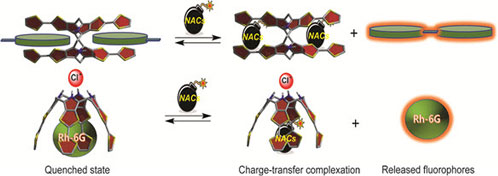

A research team consisting of Prof. Suk-Chan Lee of the College of Biotechnology and Bioengineering, Prof. Won-Keun Kim of Hallym University, and Novelgen, released an innovative virus treatment substance called "3D8scFv" which can cure both COVID-19 and Influenza.
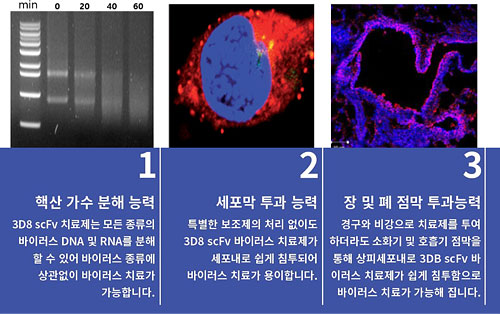
The substance was first discovered by the research team led by Prof. Suk-Chan Lee of SKKU and Prof. Myung-Hee Kwan of Ajou University in the course of research to counter the plant virus, and was developed in the process of continuing the research by expanding its scope to industrial animal viruses and human infection viruses in collaboration with Novelgen.
They showed extensive treatment and prevention for the new coronavirus (SARS-CoV-2) and two types of coronavirus (hCoV-OC43, PEDV). The new coronavirus (SARS-CoV-2) inhibited the replication of virus genes at 10µM by more than 90%, and also reduced virus production by more than 10 times. In addition, the hCoV-OC43 and PEDV also showed extensive therapeutic effects in the treatment of 3D8 scFv, as in SARS-CoV-2. The results of the study were published on the journal, BioArchive (Biorxiv.org).
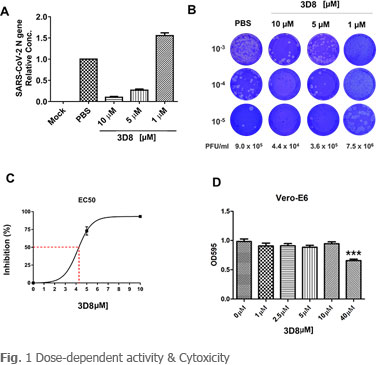
Moreover, the research confirmed that 3D8 scFv has a preventive and therapeutic effect on the Tamiflu-resistant Influenza A virus, including two types of influenza A using cellular and mouse models. The results of the study will soon be published in an international journal.
Prof. Suk-Chan Lee said, "The newly developed mini-antibodies are characterized by good penetration into epithelial cells in the intestines and lungs, so they can be developed as medicines with various administration channels."
Taehyun Kim, CEO of Novelgen, said, "3D8 scFv will be a game changer that can quickly respond to the emergence of new viruses, mutated viruses, and drug-resistance viruses." Novelgen is in the process of developing and building systems for mass production of antibodies needed for preclinical and clinical tests of COVID-19 and influenza virus treatments and aims to conduct preclinical tests within the year.

Professor of Eui-Kyung Lee of the School of Pharmacy (corresponding author) and Dr. Hye-Rin Kim (first author, currently working at Sahmyook University), Dr. Jae-Ah Park and Dr. Hye-Rim Kang (co-author) published the result of a study on the cost-effectiveness of antiviral treatment in patients with chronic hepatitis B in GUT (IF 19.819, No. 3 journal in its field), the most prestigious journal in the field of Gastroenterology & Hepatology.
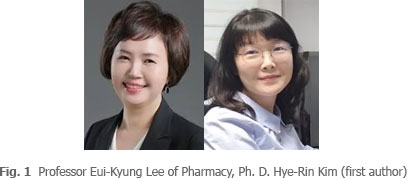
The research team cooperated with Prof. Young-Suk Lim's research team at Asan Medical Center and they assessed the cost effectiveness between the immune tolerance phase and the active phase in starting antiviral treatment in chronic hepatitis B patients. As a result, the early initiation of treatment from the immune tolerance phase, which has been considered relatively more stable than the active phase of hepatitis recommended in the current treatment guidelines, has been found to be cost-effective because it reduces the incidence of hepatocellular carcinoma that causes high medical expenses.
Professor Eui-Kyung Lee explained, "As the research result was published at a time when there is a great interest in the treatment period of chronic hepatitis B at the clinical site, it is expected to be served as a good basis for clinical experts to choose when to treat drugs and set the insurance benefit standards."
This study was supported by grants from the Korean National Health Clinical Research (NHCR) project, Ministry of Health & Welfare, Republic of Korea.

An SKKU School of Chemical Engineering research team led by Prof. Gira Yi, Prof. Sungmin Cho, Prof. Piljin Yoo, and Prof. Dukjoon Kim) developed a flexible plastic circuit board for Next-Gen OLED display through cooperation with BASF Asia-Pacific Electron Material Research Lab. The technology will lead to new plastic circuit boards that are transparent and the as coefficient of thermal expansion on the same plane as pure glass circuit boards.
The team coated SiO2 nanite particles over ZnS particles. A composite film made under this process has the same refractive index as polyether sulfone high-polymer as well as 90% relative transparency. Also, the coefficient of thermal expansion of the film was 12 ppm/oC, which is far lower than 20 ppm/oC, which is a maximum standard for commercialization, by inducing a chemical bond between the particles and the high-polymer.
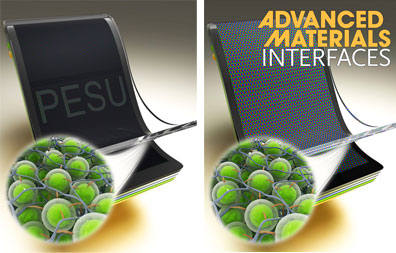
The research results were published in the December issue (vol. 24) of the prestigious material science journal Advanced Materials Interfaces. Further research of the SKKU industry-academic collaboration team for commercialization of the OLED display specific flexible plastic circuit board is ongoing.
President Dong Ryeol Shin said, "This is the first result of joint commercialization research between SKKU and BASF, a symbol of innovations in the academic and industrial fields. We believe this outcome will become a prime exemplar for globalized industry-academic collaboration that other universities could follow."

A research team led by Prof. Choong-wan Woo has developed a neuroimaging biomarker that could check chronic pain based on a brain-function connectome in a joint research project with Prof. Tor Wager from Dartmouth College.
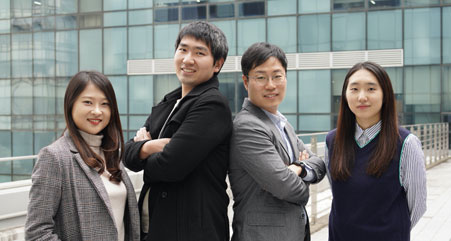
Although the objective of counting measures for pain is crucial for effective diagnosis and treatment, due to pain's subjective properties, determining pain has mainly involved medical inquiries to patients.
Pain is caused by a body's reaction to external noxious stimulus, however, the pain a patient suffers is affected by several factors like emotions, thoughts, beliefs, and memories, as well as a complex functional interaction between several cerebral areas consisting of a brain-function connectome. There have been no counting measures based on the brain-function connectome even though chronic pain that gives destructive influence to patients' lives causing severe socio-economic costs was well-known for having a considerable correlation with the brain-function connectome.
For the research, safe and sustainable pain-inducing methods were required. The team used the capsaicin method which is applying capsaicin to a subject's tongue, inducing about 10 minutes of pain. When the subject suffered pain, the team recorded the changing pattern of the brain-function connectome using fMRI. The biomarker made under this process successfully predicted all 109 health subjects' intensity of continuous pain as well as pain rating scales of all 192 backache patients with a high accuracy.
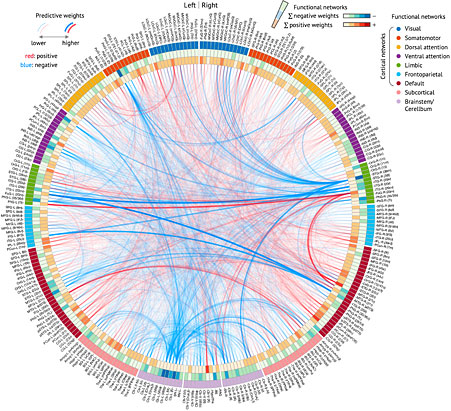
Prof. Choong-wan Woo said, "We have discovered the similarity of neuro-reaction pattern between chronic pain and lab-induced, capsaicin-based sustaining pain. Thus, we believe the research would be helpful for understanding the neuro-mechanism of chronic pain and we can eventually find a treatment for patients who are suffering from chronic pain."
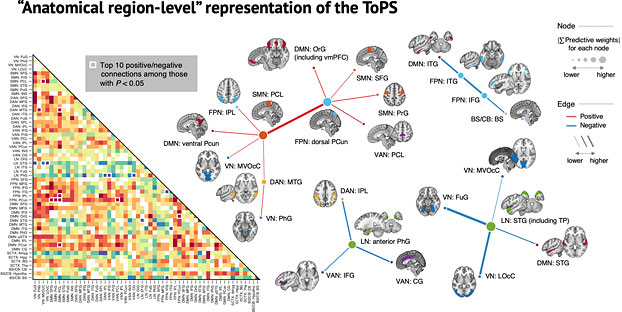
The first author, Jae-joong Lee (in doctorate course), said, "The research found pain is related not only to some cerebral areas which already have been verified for their relations to pain but also to a dynamic interaction throughout the entire brain. This is evidence for the theory that pain is a multi-dimensional experience being mediated by the brain-function connectome."
The research was supported by Institute for Basic Science of Korea, National Research Foundation of Korea, Ministry of Science and ICT of Korea, and Korea Brain Research Institute, and published in the global journal, Nature Medicine, on January 5, 2021.

Prof. Yung Doug Suh (Chemical and Polymer Engineering) has discovered Photon Avalanche Phenomenon through joint research with the United States and Poland. The team found that when they irradiated a small amount of light to a Thulium nanoparticle, if the nanoparticle has a specific form of atomic structure, the intensity of the irradiated light is amplified, releasing more powerful light. The team named the nanoparticle that caused this phenomenon a "Photon-Avalanching Nano Particle" (ANP), for its similarity to a snow avalanche. The research was published and put on the cover of Nature on January 14, 2021.
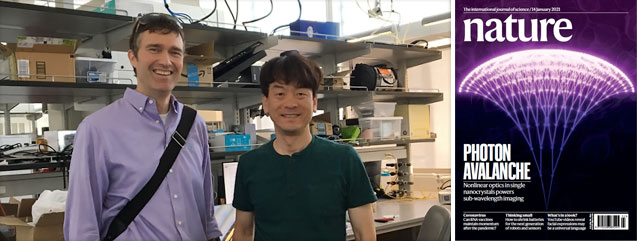
Once light is absorbed to the nanoparticle, it causes a chain amplification reaction, thus emitting more powerful light nonlinearly. With this phenomenon, the small amount of the light could be changed into a powerful, greater amount of light without any additional process other than irradiating light to the particle.
In nature, when light is irradiated to matter, it absorbs the light and consumes a small portion of light as heat energy, releasing light with the relatively small amount of energy it absorbed. Only specific materials, called UpConversion Nano Particles (UCNP), cause a different reaction.
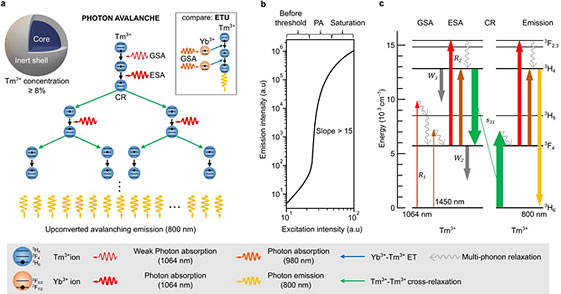
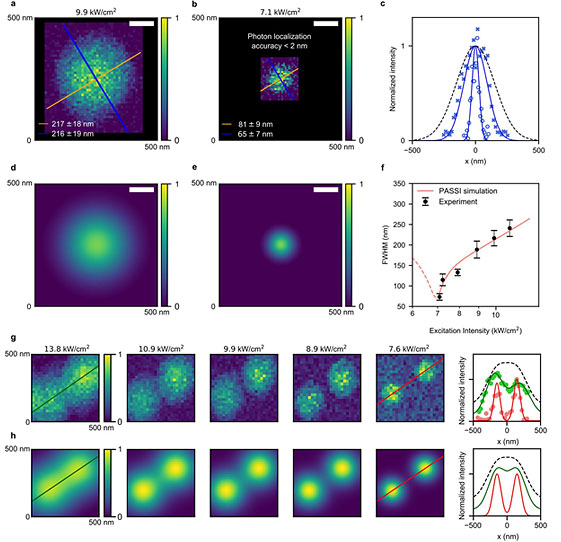
The existing UCNP, however, has a very low photoconversion efficiency (about 1%) thus it is hard to be deployed on a commercial scale. ANP, on the other hand, has a 40% photoconversion efficiency.
Prof. Yung Doug Suh said, "We believe the ANP could be used in various industries and technologies using light, and it will be a breakthrough for future technologies."



















